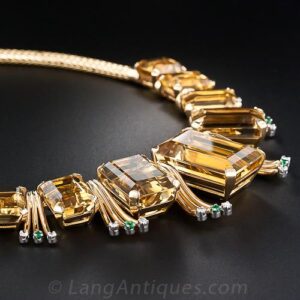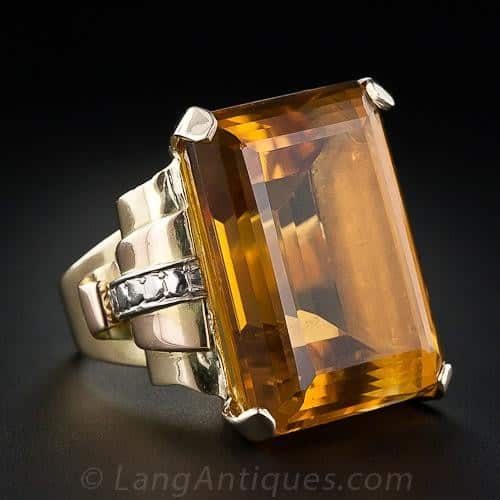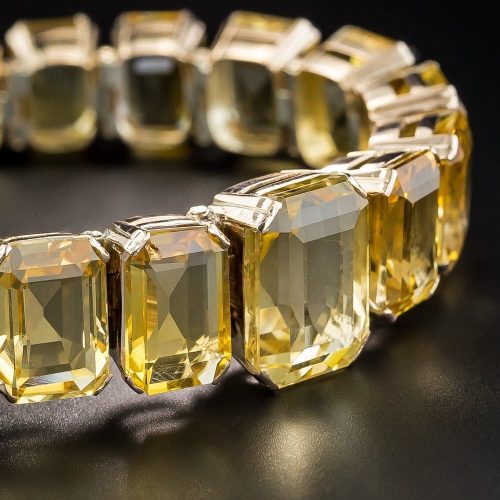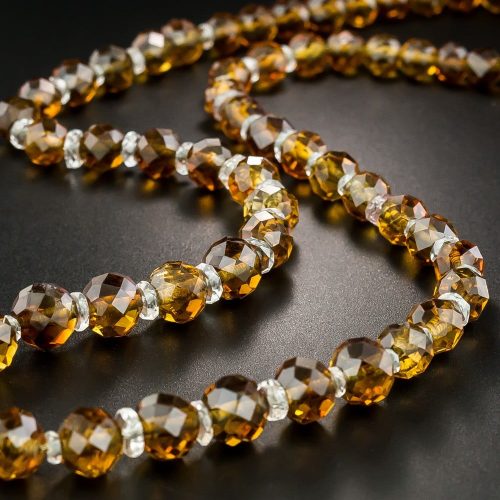
Citrine is a yellow or golden variety of quartz, colored with iron. Natural citrine is relatively rare, occurring in Brazil, Madagascar and Myanmar. Most citrine on the market today is actually heat-treated amethyst. When amethyst is heated to abut 900 degrees Fahrenheit, it alters to a golden tone. This treatment is completely stable, and it has no negative influence on the assessment of the gem. Intensely colored citrine is sometimes misrepresented as the more valuable yellow topaz. Madeira topaz and Bahia topaz are actually misnomers because they both refer to citrine, not topaz. The irony is, that although topaz is considerably more expensive than citrine, citrine is tougher and wears better than topaz.
A Brief History of Citrine
Citrine is a gemstone that has been used in Greece since the Hellenistic period (end of the 4th to the end of the 1st century BC). Citrine is the birthstone for the month of November as adopted by the American National Association of Jewelers in 1912. Citrine is also the Planetary gem for the Astrological Sun Sign of Virgo and the accepted gemstone for the Thirteenth and Seventeenth wedding anniversary.



Gemological Information for Citrine
| Color: | Yellow to Golden |
| Crystal Structure: | Trigonal |
| Refractive Index: | 1.544-1.553 |
| Durability: | Excellent |
| Hardness: | 7 |
| Family: | Quartz |
| Similar Stones: | Commonly Confused with Yellow Topaz, Yellow Beryl (heliodor), Yellow Zircon, Yellow Sapphire and Glass |
| Treatments: | Heat Treatment |
| Country of Origin: | Brazil, Madagascar and Myanmar |
Citrine Care
| Ultrasonic Cleaning: | Not Safe |
| Steam Cleaning: | Not Safe |
| Warm Soapy Water: | Safe |
| Chemical Attack: | Usually Safe |
| Light Sensitivity: | Stable |
| Heat Sensitivity: | Stable Under Normal Conditions |